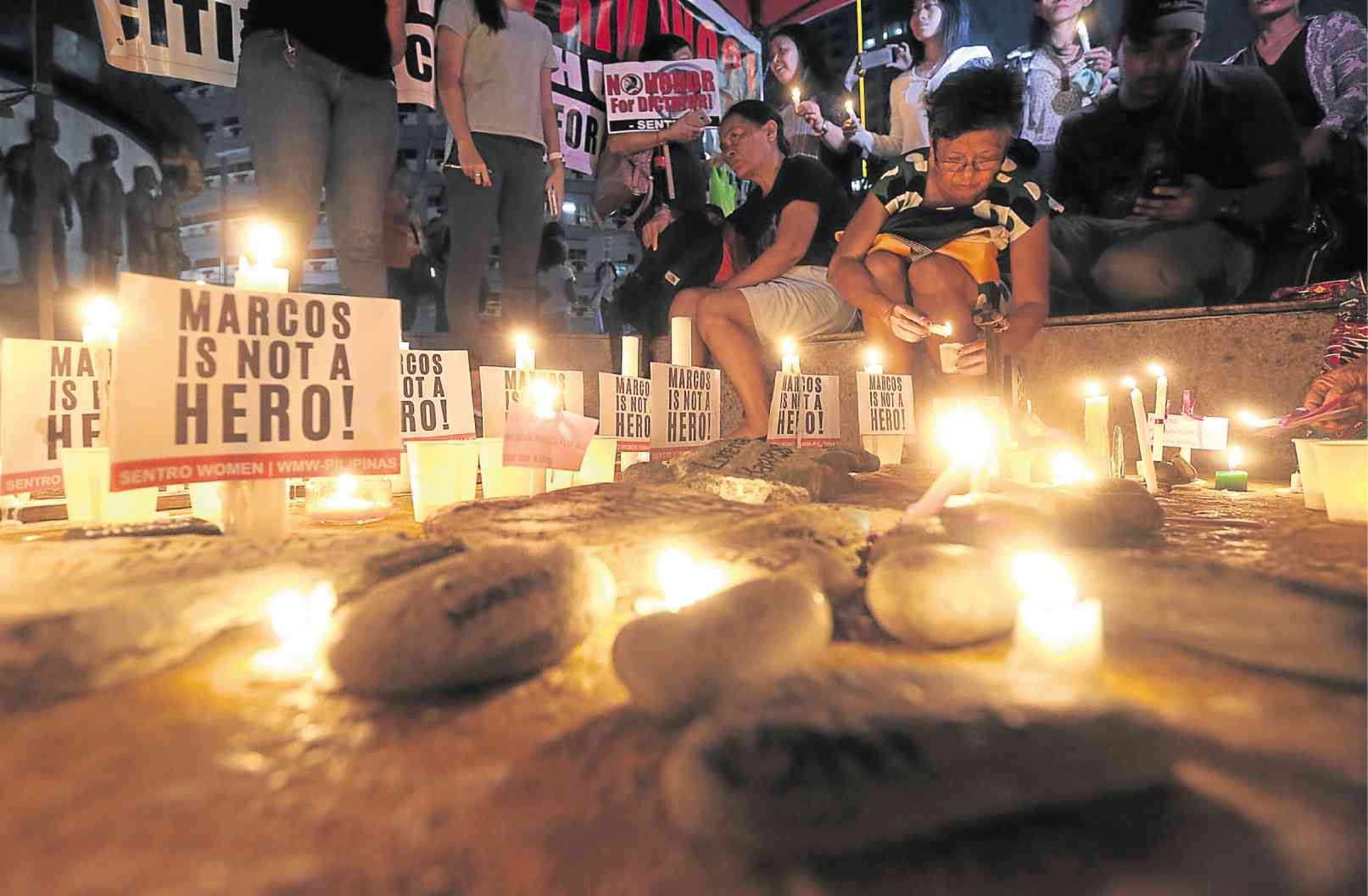
NO HERO A woman lights a candle to oppose the government’s plan to bury strongman Ferdinand Marcos with hero’s honors at Libingan ng mga Bayani during a protest action in Quezon City on Aug. 18. Protesters brought stone markers with names of women victims and survivors of abuses during martial law. GRIG MONTEGRANDE
NAGA CITY—Accounts and memories of martial law victims that young people need to hear will be used by students and teachers of Ateneo de Naga University (Adnu) to gather more support for the protest march here against the burial of dictator Ferdinand Marcos at Libingan ng mga Bayani.
Members of the faculty, leaders of students’ organizations and Adnu president, Fr. Primitivo Viray Jr., met last week to discuss the march-protest against Marcos’ burial and the need to continuously educate students about martial law.
Emmanuel Abejero, 45, chair of the university’s Social Sciences Department, said it surprised him that a lot of students had expressed their desire to join the protest against Marcos’ burial at the heroes’ cemetery.
“It started in a discussion with teachers for the signature campaign. But we found out that there were so many students waiting for somebody to initiate a campaign against the burial of Marcos at [Libingan],” Abejero told the Inquirer.
“For the first time in Ateneo history, since the Marcos years, majority of the sectors at the Adnu community are unified for a common cause,” Abejero said.
The Adnu group of protesters against Marcos’ hero’s burial plans to hold a torch parade around the central business district of Naga City and a rally at Plaza Quezon on Aug. 31.
He said buildup activities being initiated included a signature campaign against the strongman’s burial at Libingan, “conscientization” talks and forums for millennials with martial law victims as speakers, room-to-room campaign and preparation for the march-protest here.
Abejero said the activities against Marcos’ burial would continue after the protest-march, with film showing and exhibits on martial law in September and continuing education on the martial law years as the dark side of the Philippine history.
“Dai Na Nanggad! (Never Again)” is the slogan of the group, he said.
Joc Dolorecal, 24, political science instructor, said he does not have a problem with Marcos’ burial for as long as it is not at Libingan.
“Burying Marcos at [Libingan] is a way of validating that all the dictator had done had been good for the country,” Dolorecal said.
Roslyn de Balmes, 17, president of social sciences group, said their group would never agree with Marcos’ burial at Libingan because it glosses over the sins of the dictator against the Filipino people in those dark years in history.
Christian Angelo Oñate, 17, president of Liga ng mga Estudyante sa Agham Pampulitika, said they had been conducting a group study about the Marcos dictatorship where they learned about the numerous injustices that happened during the martial law years.